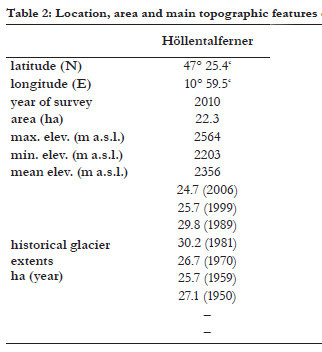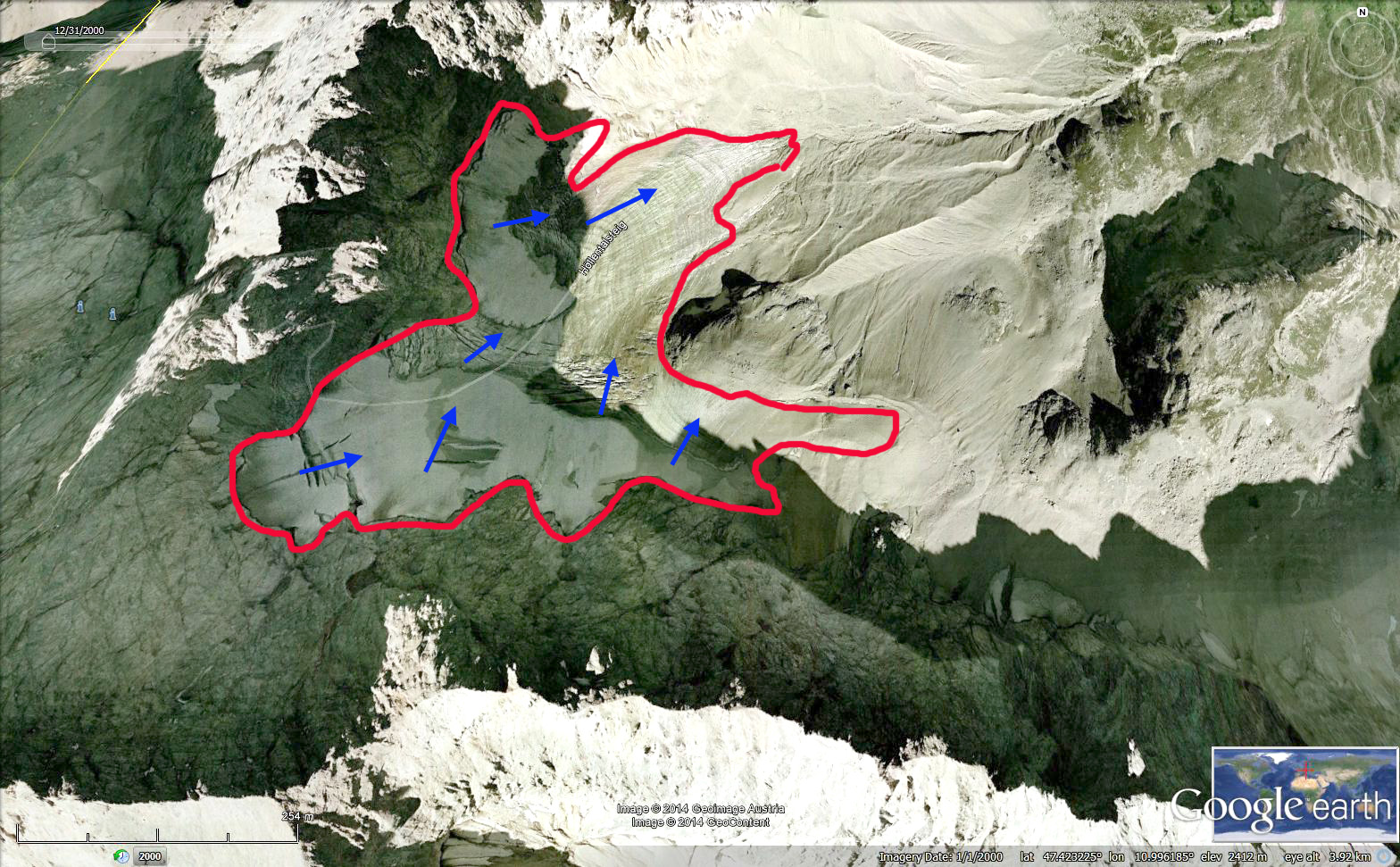August 26, 2014
Hollentalferner Retreat, Bavarian Alps Germany
Posted by Mauri Pelto
Hollentalferner (Glacier) is on the east flank of Zugspitze the highest mountain in the Bavarian Alps of Germany. The upper portion of the glacier is avalanche fed which flows through a minor icefall to the main terminus tongue that displays prominent annual layers.Hagg et al (2012) in a detailed examination of Bavarian Alp glaciers report on changes in the area of this glacier from 1950 to 2010. They note that from 1959 to 1981 the glacier expanded from 26 to 30 hectares. From 1989 to 2010 the glacier contracted from 30 hectares to 22 hectares. A comparison of 2000 and 2009 Google earth images indicates a retreat of the main terminus tongue of 40 m. The glacier tongue also contracted a similar amount in width. The level of crevassing on the upper glacier declined somewhat. In a closeup of the annual layers, last image, the main tongue displays 45 annual layers, red arrows. The secondary terminus, pink arrow, displays much narrower and more numerous layers. The supraglacial streams, orange arrows have incised more deeply into the glacier from 2000 to 2009. The combination of retraction of the terminus tongue, reduced crevassing and greater surface stream development on the glacier indicate a thinning glacier that will continue to slowly retreat. The crevasses in the icefall reach, green arrows, have significant depth ~10 m, and are widened by ablation processes. They indicate active flow from the upper glacier in the recent past, but the sharply concave profile below the icefall suggests limited flow into the terminus tongue area at present. The glacier retreat is less than on Blaueis Gletscher and though the glacier cannot achieve equilibrium with current climate and will disappear, this process will take longer than on the other Bavarian glaciers, this glacier will almost certainly still be around after 2030. 
Image from Karlsruhe Institute of Technology

Table of areal extent change from Hagg et al (2012)





 Dean of Academic Affairs at Nichols College and Professor of Environmental Science at Nichols College in Massachusetts since 1989. Glaciologist directing the North Cascade Glacier Climate Project since 1984. This project monitors the mass balance and behavior of more glaciers than any other in North America.
Dean of Academic Affairs at Nichols College and Professor of Environmental Science at Nichols College in Massachusetts since 1989. Glaciologist directing the North Cascade Glacier Climate Project since 1984. This project monitors the mass balance and behavior of more glaciers than any other in North America.